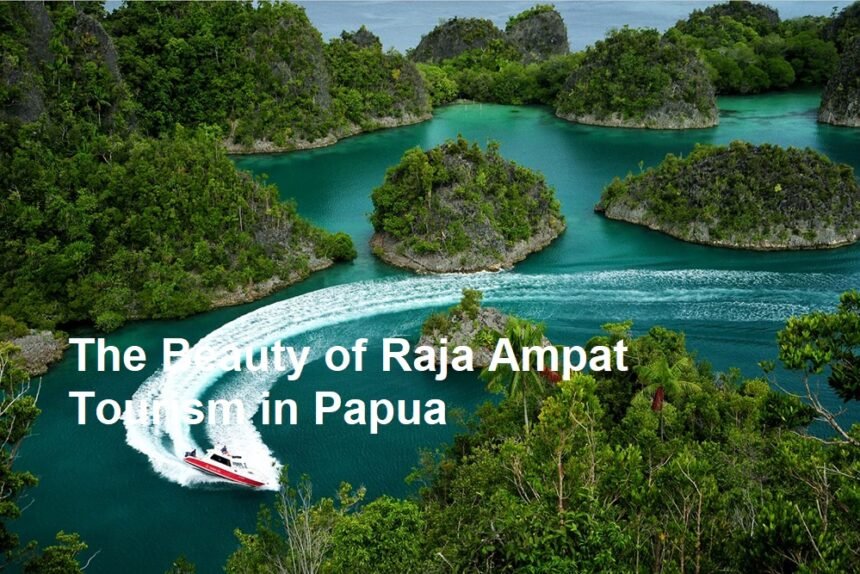Raja Ampat, located off the coast of Papua in Indonesia, is a stunning archipelago renowned for its unparalleled natural beauty, vibrant marine life, and pristine beaches. Comprising over 1,500 small islands, cays, and shoals, Raja Ampat is often regarded as one of the most breathtaking and ecologically rich destinations in the world. This hidden paradise has become increasingly popular among tourists seeking both adventure and tranquility in a tropical setting, offering a unique combination of adventure, culture, and serenity.
Raja Ampat is often called the “Last Paradise” for divers due to its extraordinary underwater biodiversity. It lies within the Coral Triangle, which is known as the world’s center for marine biodiversity. The waters of Raja Ampat are home to over 1,500 species of fish and 600 types of coral, making it a top destination for diving enthusiasts. Scuba divers and snorkelers flock to the islands to explore its vibrant coral reefs, where they can encounter various species of sharks, manta rays, sea turtles, and countless colorful fish.
Among the most famous dive sites are the Wayag Islands, known for their crystal-clear waters, towering limestone islands, and abundant marine life. Misool Island is another notable spot, famous for its stunning coral gardens and rich biodiversity. For those who are not avid divers, snorkeling along the shores of Raja Ampat also offers a glimpse into its underwater world, where visitors can swim alongside schools of tropical fish, vibrant corals, and other marine creatures.
While Raja Ampat’s underwater world is world-famous, its landscapes above the water are equally awe-inspiring. The islands feature dramatic limestone cliffs, lush forests, and secluded beaches that are perfect for relaxation and exploration. The island of Wayag is especially renowned for its karst formations, with its towering peaks offering panoramic views of the surrounding turquoise seas and small islands. Visitors can hike to the top of these islands to enjoy breathtaking vistas and take memorable photographs.
Raja Ampat’s beaches are also a big draw for tourists. Many of the islands are home to white sandy beaches that remain untouched by mass tourism, offering a peaceful escape for travelers looking to unwind in nature. The beaches, fringed by palm trees and bordered by crystal-clear waters, are perfect for swimming, sunbathing, or simply taking in the tranquility of this unspoiled environment.
Raja Ampat is not only a haven for nature lovers but also a place where visitors can immerse themselves in the indigenous cultures of the region. The islands are home to several ethnic groups, including the Papuans, who have lived in the area for centuries. These communities maintain traditional ways of life, with many relying on fishing and farming for their livelihoods. Travelers can learn about the local customs, crafts, and rituals through village visits, where they can witness traditional dances, music, and even try their hand at local crafts such as weaving.
One of the most fascinating aspects of Raja Ampat’s culture is the connection between the local people and their natural environment. The indigenous communities have a deep respect for the land and sea, and many are involved in conservation efforts to protect their precious resources. Visitors can experience this unique relationship with nature by joining local conservation programs or supporting eco-friendly tours that prioritize sustainability and responsible travel.
With its increasing popularity, the government and local communities in Raja Ampat have made significant efforts to promote sustainable tourism. The region’s natural beauty is at risk from overdevelopment and environmental degradation, which is why eco-tourism has become a major focus. Many local resorts and tour operators are committed to using environmentally friendly practices, such as waste management, renewable energy sources, and promoting responsible travel. Visitors are encouraged to respect the environment by avoiding damage to coral reefs, reducing plastic waste, and supporting initiatives that contribute to conservation.
One of the key conservation efforts is the establishment of marine protected areas (MPAs) around Raja Ampat. These MPAs help preserve the region’s delicate ecosystems and prevent overfishing, which is a major threat to marine biodiversity. The local government, in collaboration with international organizations, has been working to ensure that tourism benefits both the environment and the communities that rely on it.
Raja Ampat, though remote, is becoming more accessible to travelers thanks to improvements in transportation. The easiest way to reach Raja Ampat is by flying to Sorong, a city on the western tip of Papua, and then taking a boat or a small plane to the islands. Flights from major cities like Jakarta or Makassar connect to Sorong, making it relatively easy for travelers to get to this hidden gem. Once on the islands, tourists can explore the area by boat, kayak, or even on foot, with many resorts offering guided tours to explore the best spots.
Raja Ampat is truly one of the world’s most extraordinary travel destinations, offering visitors a chance to experience a pristine paradise both above and below the water. With its vibrant coral reefs, stunning landscapes, rich cultural heritage, and commitment to sustainable tourism, Raja Ampat is a place that continues to captivate those who venture there. Whether you are a diver, an adventurer, or someone simply looking to escape the hustle and bustle of modern life, Raja Ampat offers something for everyone. For those looking to experience one of Indonesia’s most beautiful and unspoiled regions, a visit to Raja Ampat is an unforgettable journey into nature’s purest form.













